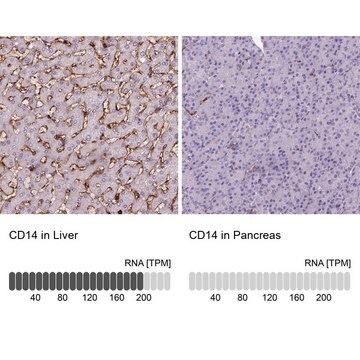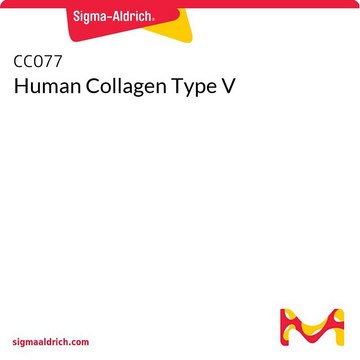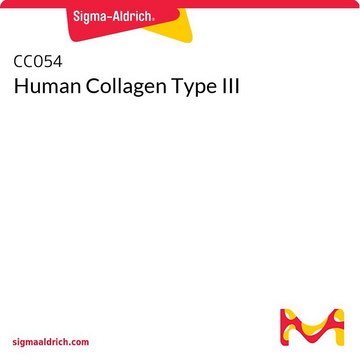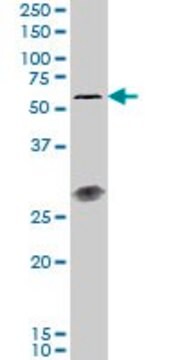C7673
Monoclonal Anti-CD14 antibody produced in mouse
clone UCHM-1, purified immunoglobulin, buffered aqueous solution
Sinonimo/i:
Monoclonal Anti-CD14
About This Item
Prodotti consigliati
Origine biologica
mouse
Coniugato
unconjugated
Forma dell’anticorpo
purified immunoglobulin
Tipo di anticorpo
primary antibodies
Clone
UCHM-1, monoclonal
Forma fisica
buffered aqueous solution
PM
antigen 55 kDa
Reattività contro le specie
human
tecniche
flow cytometry: 5 μL using 1 × 106 cells
Isotipo
IgG2a
N° accesso UniProt
Condizioni di spedizione
wet ice
Temperatura di conservazione
2-8°C
modifica post-traduzionali bersaglio
unmodified
Informazioni sul gene
human ... CD14(929)
Cerchi prodotti simili? Visita Guida al confronto tra prodotti
Specificità
3rd Workshop: code no. 203
4th Workshop: code no. M24
Immunogeno
Applicazioni
- Flow cytometry at a dilution of 5μL using 1 × 106 cells
- Immunofluorescence.
- Immunoblotting.
Azioni biochim/fisiol
Descrizione del bersaglio
Stato fisico
Esclusione di responsabilità
Non trovi il prodotto giusto?
Prova il nostro Motore di ricerca dei prodotti.
Codice della classe di stoccaggio
10 - Combustible liquids
Classe di pericolosità dell'acqua (WGK)
nwg
Punto d’infiammabilità (°F)
Not applicable
Punto d’infiammabilità (°C)
Not applicable
Certificati d'analisi (COA)
Cerca il Certificati d'analisi (COA) digitando il numero di lotto/batch corrispondente. I numeri di lotto o di batch sono stampati sull'etichetta dei prodotti dopo la parola ‘Lotto’ o ‘Batch’.
Possiedi già questo prodotto?
I documenti relativi ai prodotti acquistati recentemente sono disponibili nell’Archivio dei documenti.
Il team dei nostri ricercatori vanta grande esperienza in tutte le aree della ricerca quali Life Science, scienza dei materiali, sintesi chimica, cromatografia, discipline analitiche, ecc..
Contatta l'Assistenza Tecnica.







